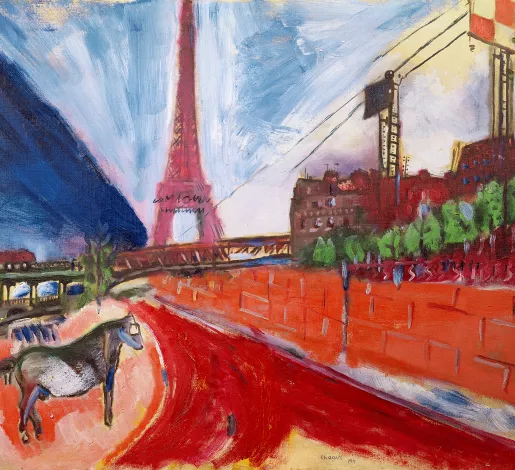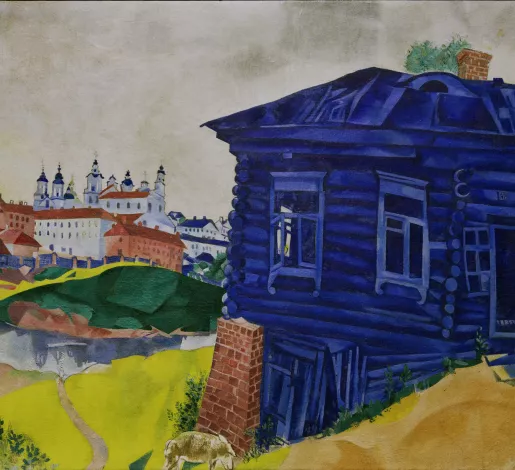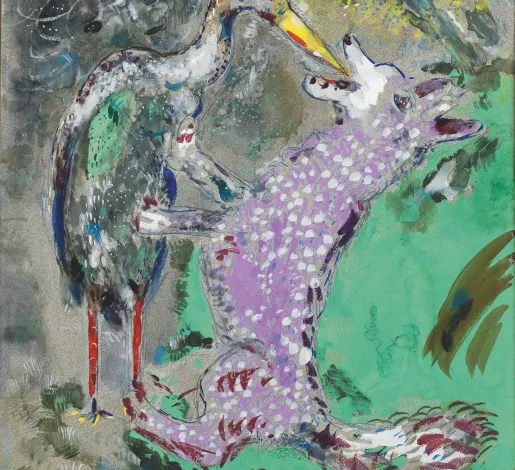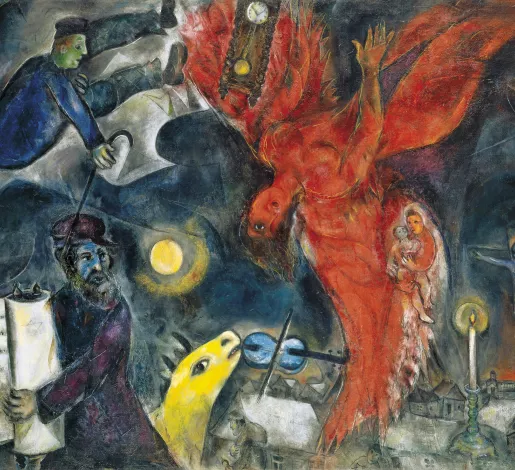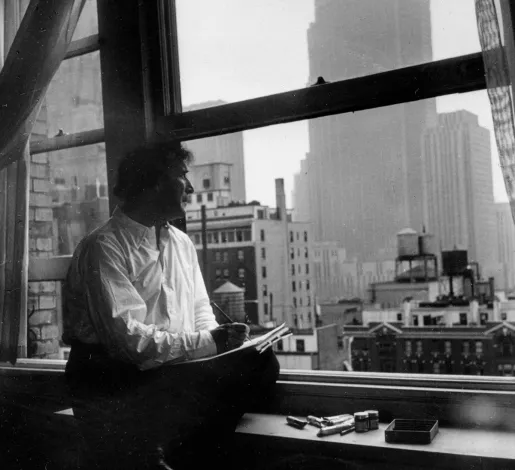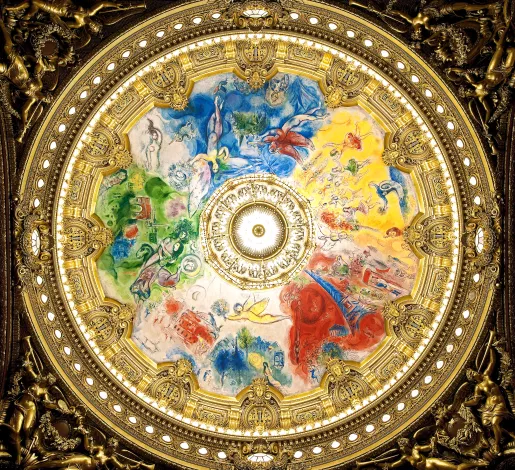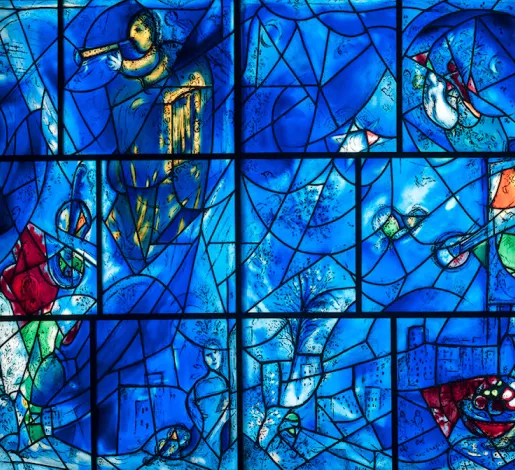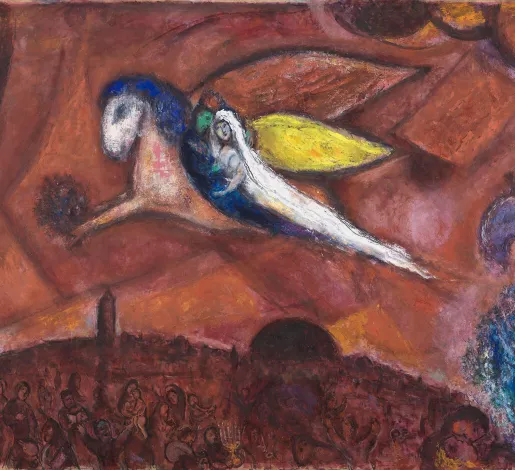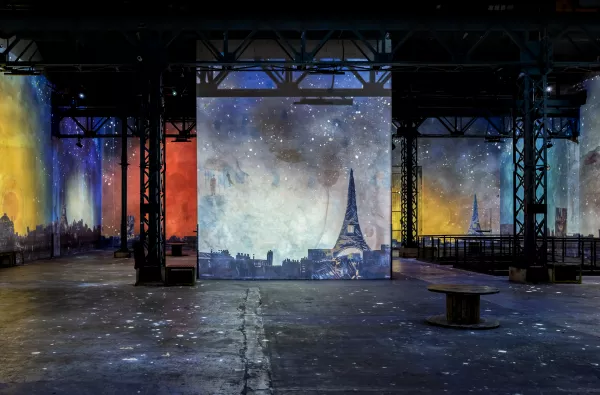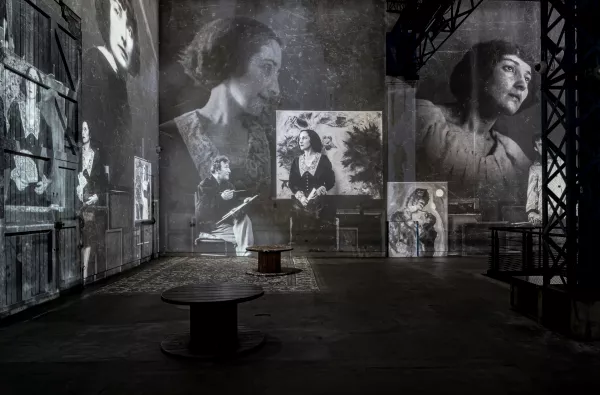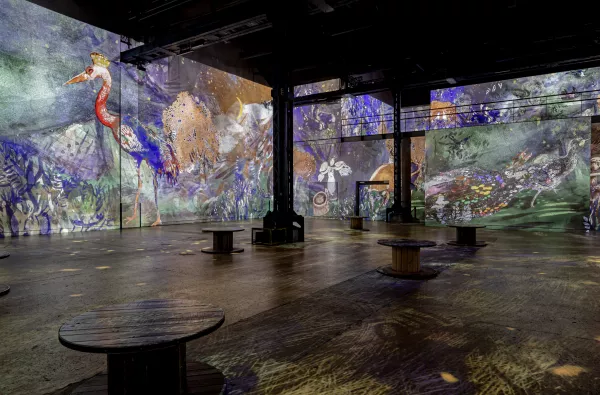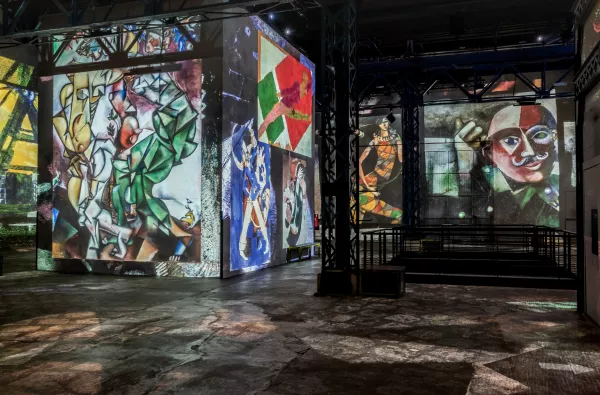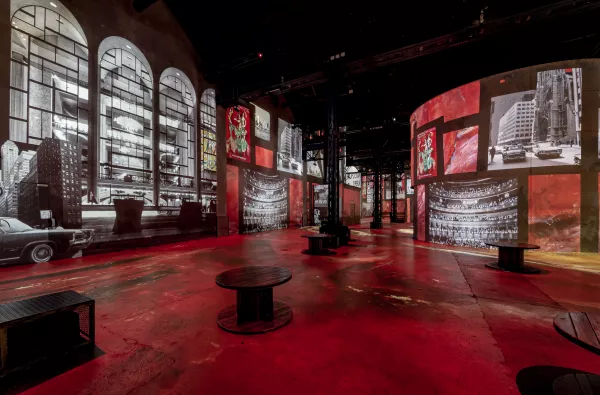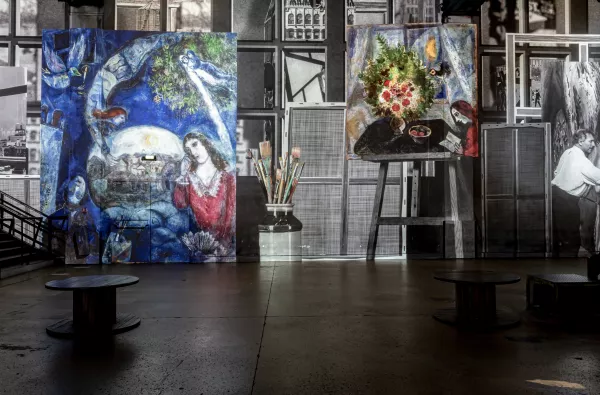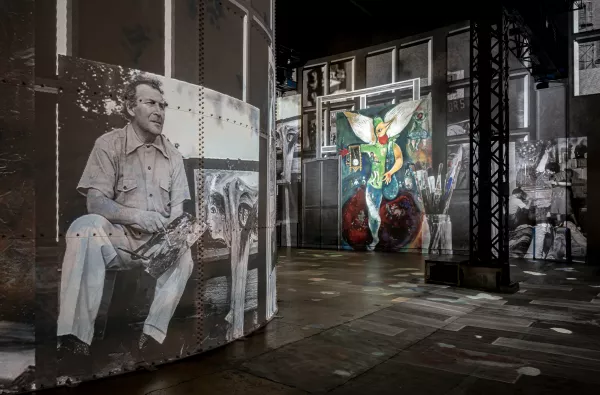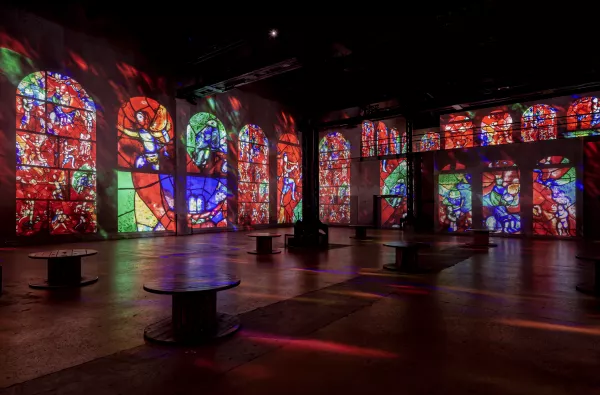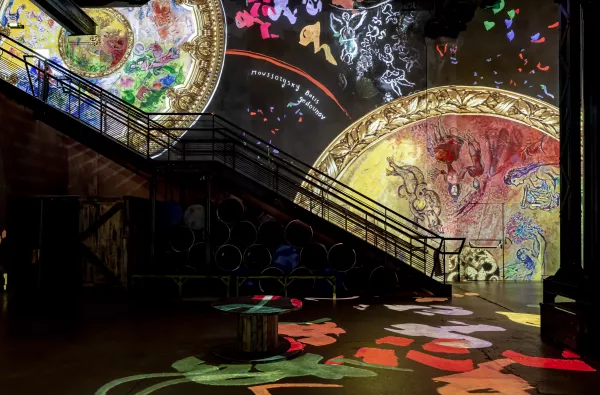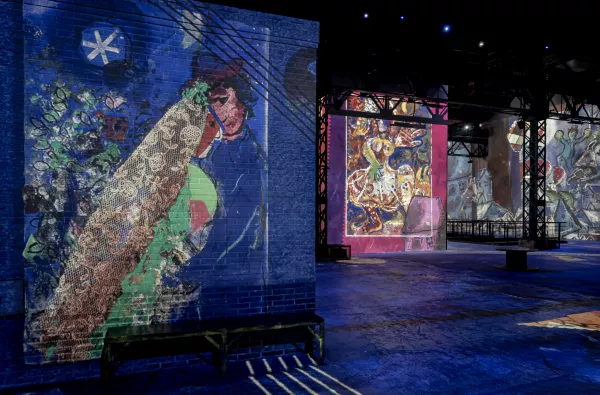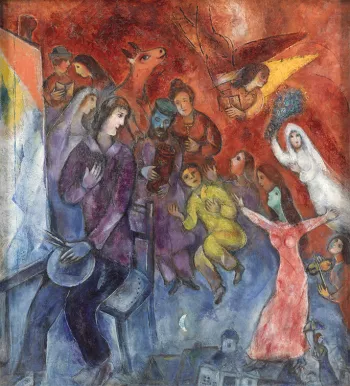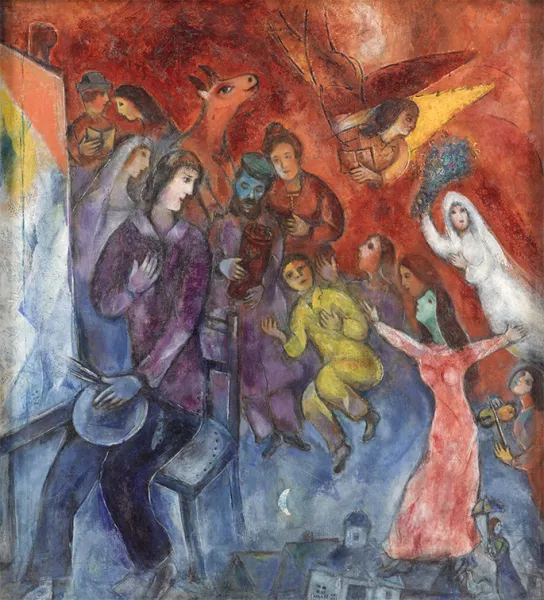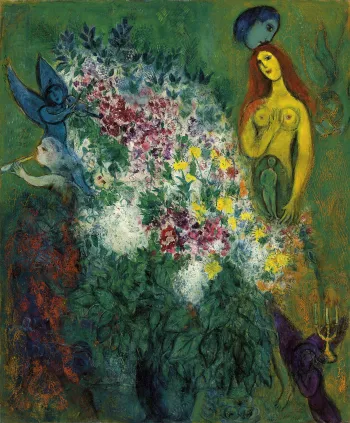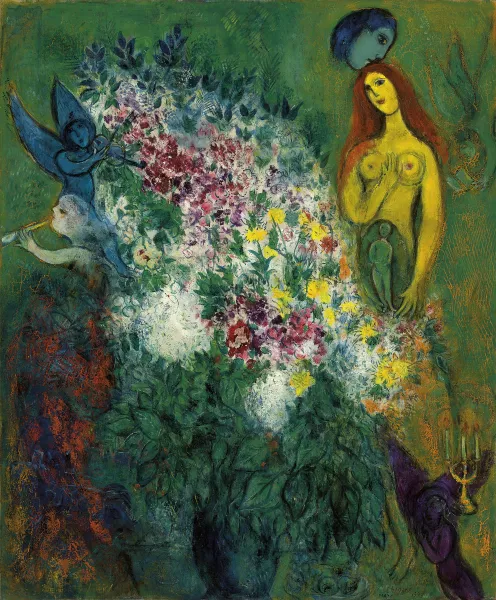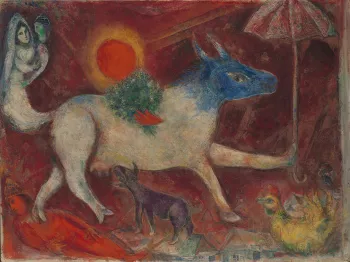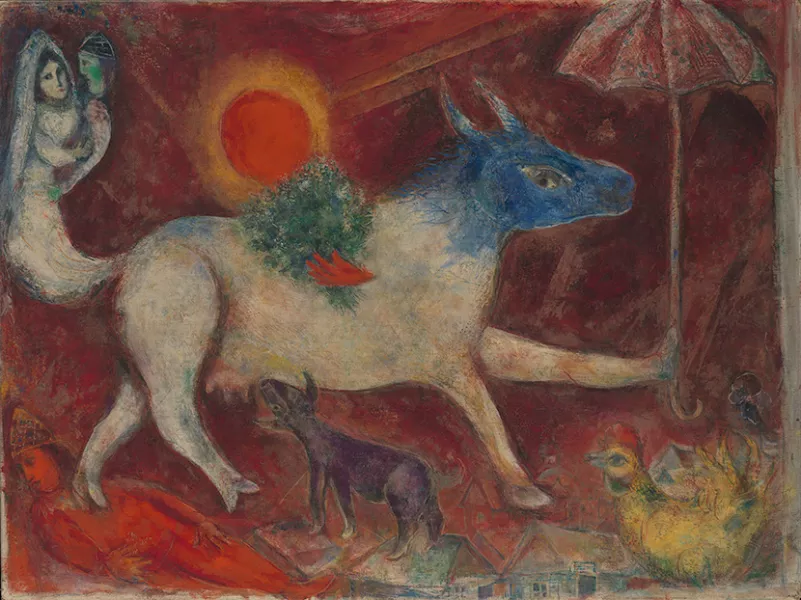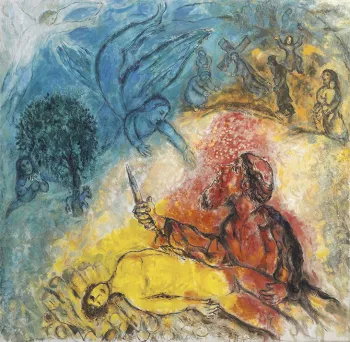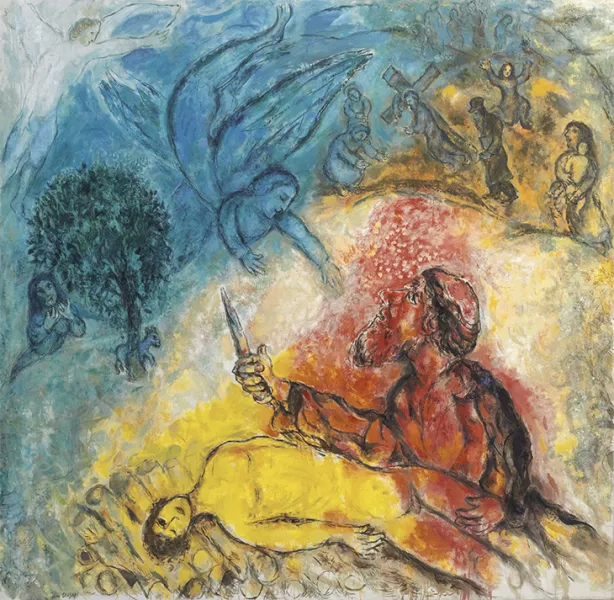About the exhibition
Chagall, Paris - New York
Chagall (1887-1985)
listen to the playlist of the exhibition
Work of the month
Birthday, 1915
In Birthday, Chagall celebrates his love for Bella, whom he married upon his return to Russia. The couple are radiantly happy, far from the world and the outbreak of war in Europe. A new life is opening up to them. It was in St. Petersburg in 1909 that Chagall, then an art student, met Bella Rosenfeld who was also from Vitebsk. The painter recalled the love at first sight in his autobiography My Life, "She looks — oh, her eyes! — I look too. As if we knew each other a long time ago, and she knows everything about me: my childhood, my present life and what will happen to me; as if she was always watching me, was somewhere nearby, although I saw her for the first time.” Bella will change Chagall's life forever. Through her education and culture, she revealed other art forms to him.
Marc Chagall, Birthday, 1915, oil on cardboard, 80,6 x 99,7 cm, Acquired through the Lillie P. Bliss Bequest (by exchange), Museum of Modern Art, New York, USA
Key works
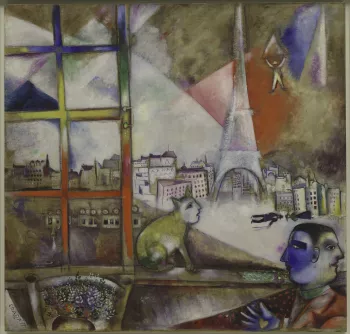
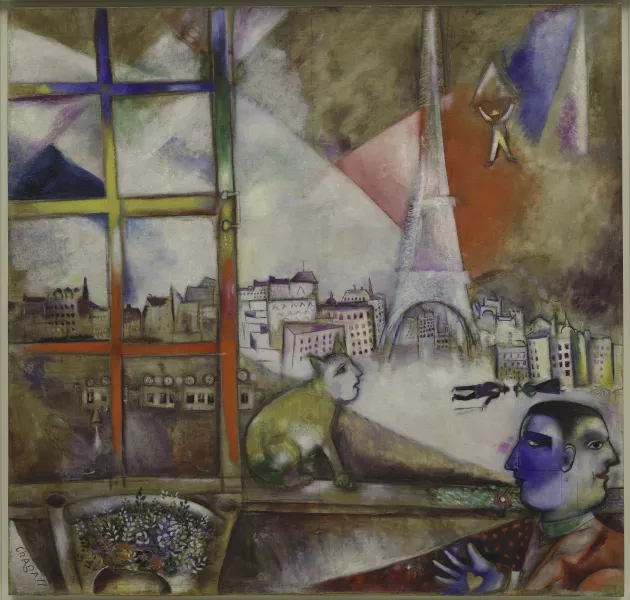
Paris par la fenêtre
Marc Chagall , 1913 , huile sur toile , 136 x 141,9 cm , Solomon R. Guggenheim Museum, New York, Solomon R. Guggenheim Founding Collection, By gift, The Solomon R. Guggenheim Museum, New York, Etats-Unis , Photo © The Solomon R. Guggenheim Foundation / Art Resource, NY, Dist. RMN-Grand Palais / The Solomon R. Guggenheim Foundation / Art Resource, NY , © Adagp, Paris, 2023
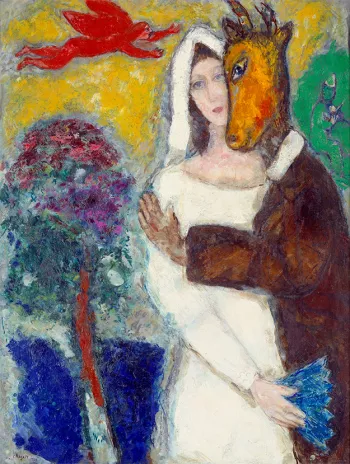
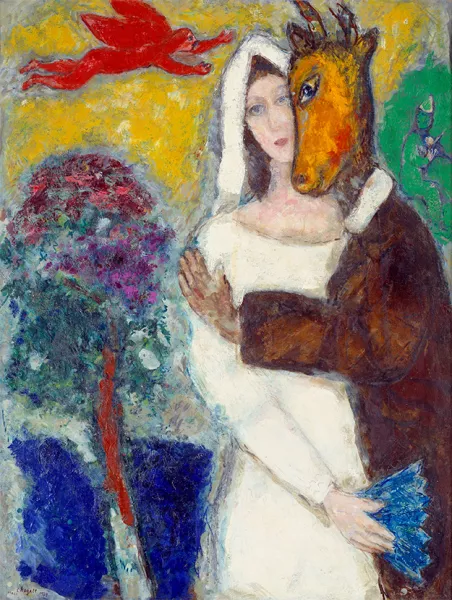
Marc Chagall, Le Songe d'une nuit d'été, 1939, huile sur toile, 116,5 x 89 cm, Musée des Beaux-Arts de Grenoble, France, Photo © Photo Josse / Bridgeman Images, © Adagp, Paris 2023
Le Songe d'une nuit d'été
Marc Chagall , 1939 , huile sur toile , 116,5 x 89 cm , Musée des Beaux-Arts de Grenoble, France, Photo , © Photo Josse / Bridgeman Images , © Adagp, Paris 2023
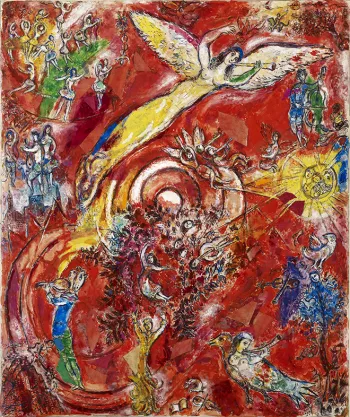
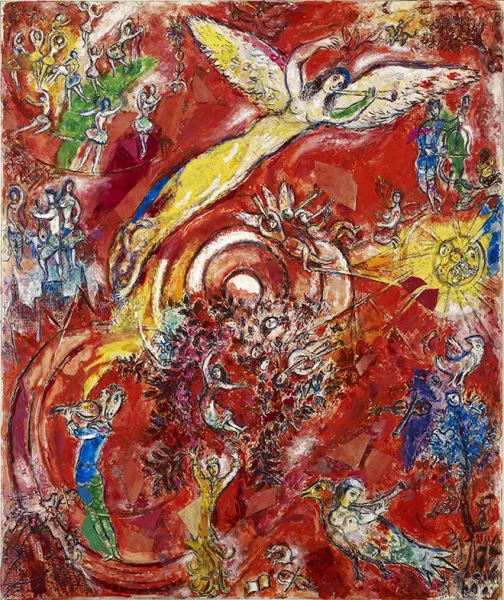
Le Triomphe de la Musique
Marc Chagall , 1966 , maquette définitive pour la peinture murale du Metropolitan Opera, Lincoln Center, New York, tempera, gouache et collage sur papier marouflé sur papier coréen , 109 × 91,5 cm , collection privée , Photo © Archives Marc et Ida Chagall, Paris , © Adagp, Paris 2023
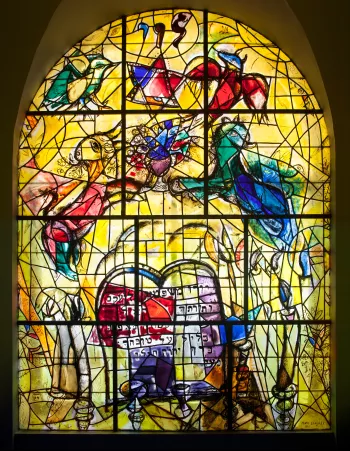
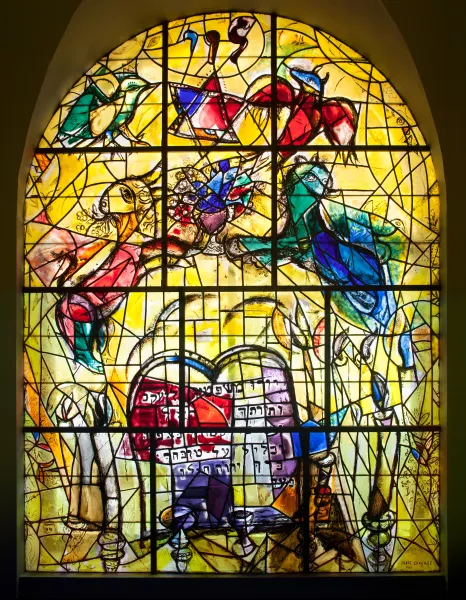
La Tribu de Levi
Marc Chagall , 1962 , vitrail , Synagogue du Centre Médical Hadassah, Jérusalem, Israël, © Photograph by Yuval Yairi , © Hadassah, the Women’s Zionist Organization of America, Inc. Owns the rights to the photograph and of the Chagall Windows, 2013, © Vitrail de Marc Chagall réalisé en collaboration avec Charles Marq , © Adagp, Paris 2023
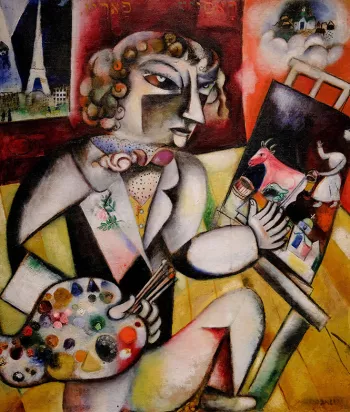
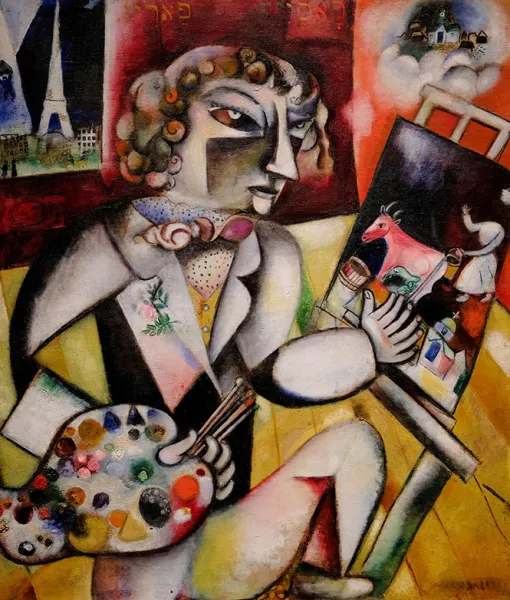
Marc Chagall, Autoportrait aux sept doigts, 1912-1913, huile sur toile, 135,5 x 117 cm, Stedelijk Museum, Amsterdam, Pays-Bas, Photo: Bridgeman Images, © Adagp, Paris, 2023
Autoportrait aux sept doigts
Marc Chagall , 1912-1913 , huile sur toile , 135,5 x 117 cm , Stedelijk Museum, Amsterdam, Pays-Bas , Photo: Bridgeman Images , © Adagp, Paris, 2023
Explore more
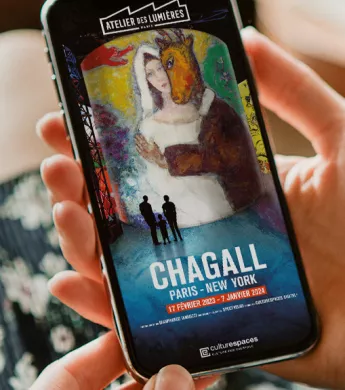
Download our App
The application, available free of charge on iOS and Android, gives commentaries on the works of our current exhibitions. Discover through original anecdotes 30 major works of the exhibition "Chagall, Paris – New York".
Discover also the exhibitions "Dalí, the Endless Enigma" in Bassins des Lumières (Bordeaux) and Fabrique des Lumières (Amsterdam), "From Vermeer to Van Gogh, the Dutch Masters" in Carrières des Lumières (Les Baux-de-Provence) and "Klimt, Gold in Motion" in Phoenix des Lumières (Dortmund).

